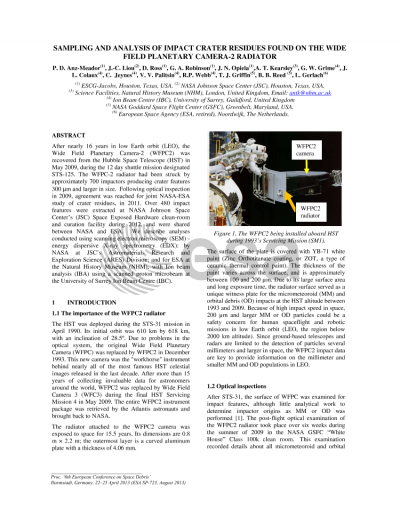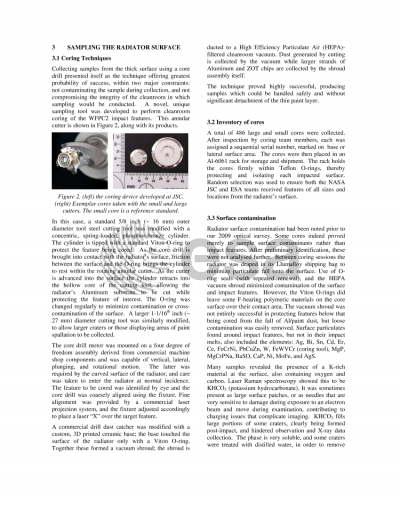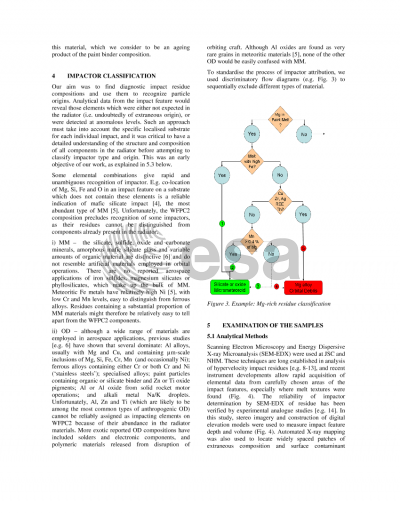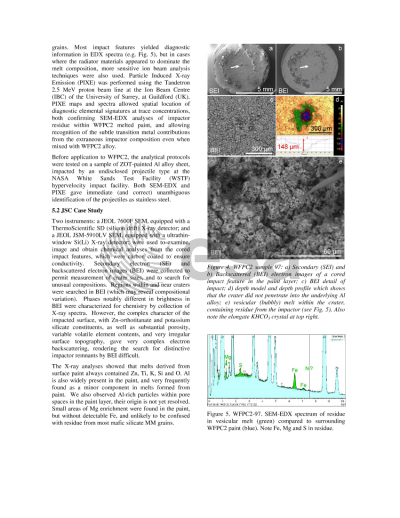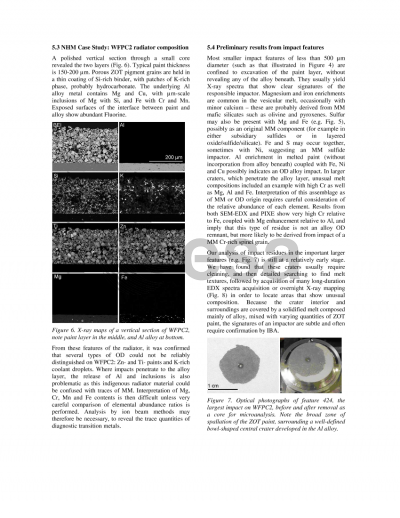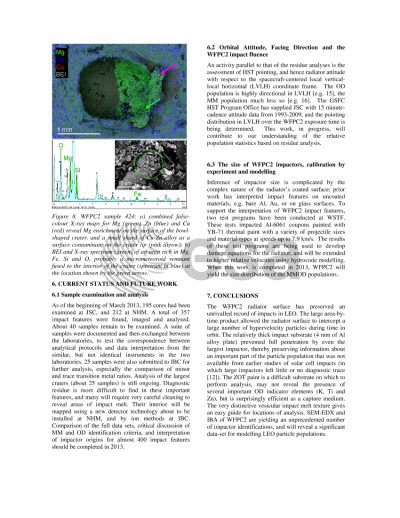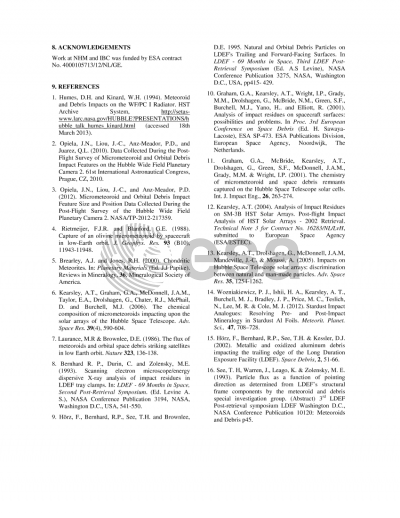Document details

Abstract
After nearly 16 years in low Earth orbit (LEO), the Wide Field Planetary Camera-2 (WFPC2) was recovered from the Hubble Space Telescope (HST) in May 2009, during the 12 day shuttle mission designated STS-125. The WFPC-2 radiator had been struck by approximately 700 impactors producing crater features 300 mu m and larger in size. Following optical inspection in 2009, agreement was reached for joint NASA-ESA study of crater residues, in 2011. Over 480 impact features were extracted at NASA Johnson Space Center's (JSC) Space Exposed Hardware clean-room and curation facility during 2012, and were shared between NASA and ESA. We describe analyses conducted using scanning electron microscopy (SEM) - energy dispersive X-ray spectrometry (EDX): by NASA at JSC's Astromaterials Research and Exploration Science (ARES) Division; and for ESA at the Natural History Museum (NHM), with Ion beam analysis (IBA) using a scanned proton microbeam at the University of Surrey Ion Beam Centre (IBC).
Preview
